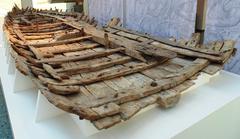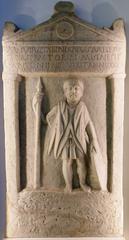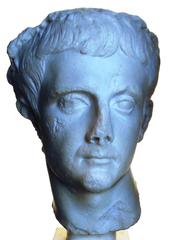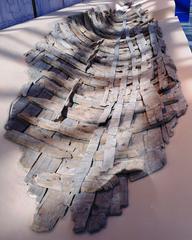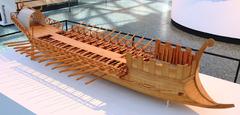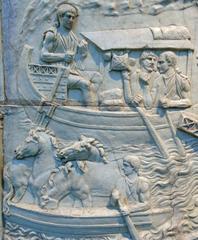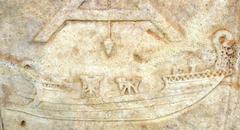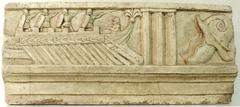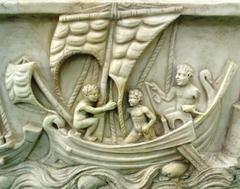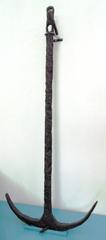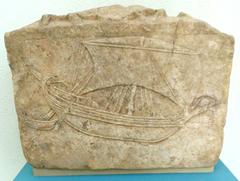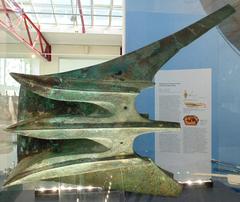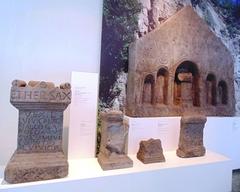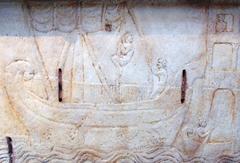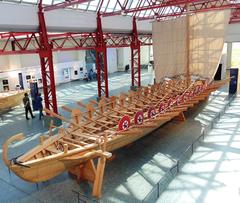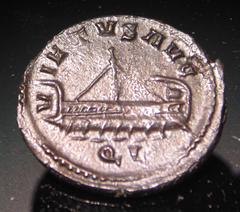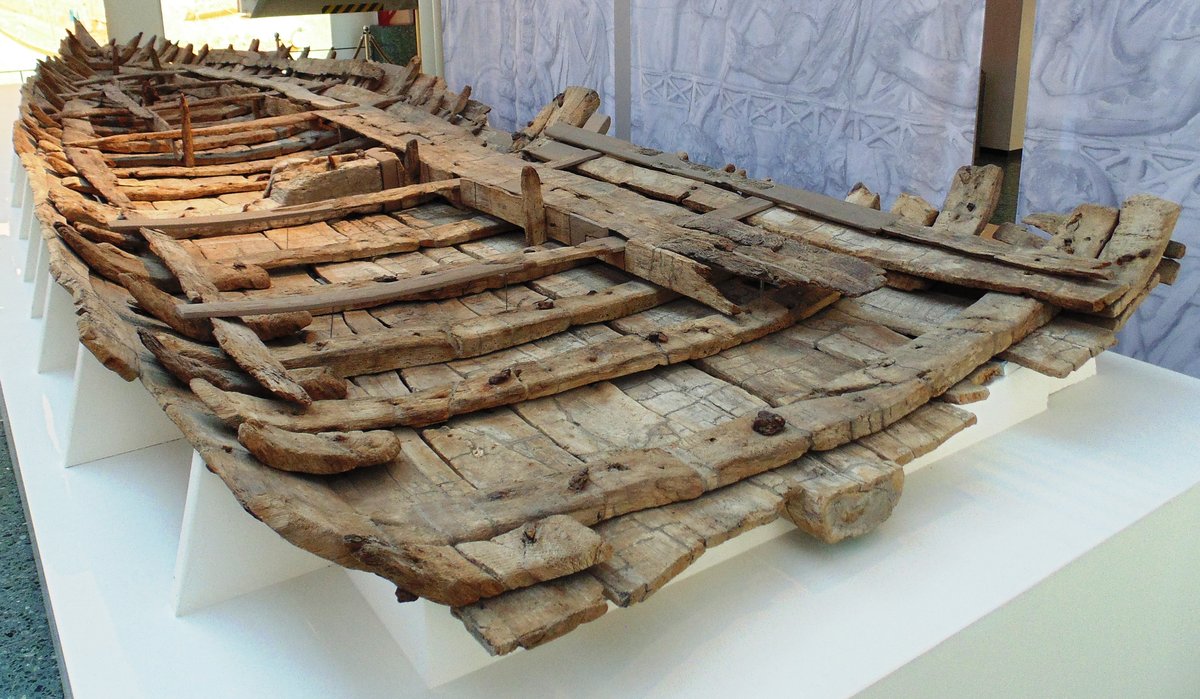
Museum of Ancient Shipbuilding Mainz: Visiting Hours, Tickets, and Historical Sites Guide
Date: 14/06/2025
Introduction
Situated along the scenic banks of the Rhine River, the Museum of Ancient Shipbuilding (Museum für Antike Schifffahrt) in Mainz, Germany, offers a unique journey through the maritime history and naval technology of the late Roman Empire. Founded on the extraordinary discovery of five well-preserved Roman ships during construction in the early 1980s, the museum has become a center for archaeological research, education, and public engagement. Through its original ship hulls, full-scale reconstructions, interactive exhibits, and comprehensive educational programs, the museum provides valuable insights into Roman shipbuilding, military logistics, and the broader cultural and economic role of river fleets in antiquity.
For up-to-date details on visiting hours, ticketing, and special exhibitions, refer to the official museum website and Germany Travel’s overview.
Table of Contents
- Discovery of the Mainz Roman Ships
- Historical Context: Mainz as a Roman Naval Hub
- Types of Ships and Archaeological Significance
- Visiting the Museum: Hours, Tickets, and Accessibility
- Conservation, Research, and Experimental Archaeology
- Educational and Cultural Role
- Visitor Experience and Facilities
- Frequently Asked Questions (FAQ)
- Conclusion and Further Engagement
- References and Further Reading
Discovery of the Mainz Roman Ships
The museum’s foundation rests on a significant find in 1981–1982, when construction workers unearthed the remains of five late Roman ships near the ancient harbor of Mogontiacum—modern-day Mainz. These vessels, preserved by anaerobic river mud, date to the 4th century CE and are collectively known as the Mainz Roman ships (Wikipedia). Their discovery provided archaeologists with an unprecedented opportunity to study Roman naval architecture and riverine operations in detail.
Historical Context: Mainz as a Roman Naval Hub
Mainz, historically known as Mogontiacum, served as a principal military and logistical center on the Roman Empire’s northern frontier. Its strategic location at the confluence of the Rhine and Main rivers positioned it as the headquarters of the Classis Germanica, the Roman Rhine fleet (Romano-Germanic Central Museum). The fleet was instrumental in defending the empire’s border, facilitating trade, and maintaining communication across the region.
The archaeological evidence found at Mainz, including shipwrecks and related artifacts, substantiates historical records detailing the importance of Roman river fleets and Mainz’s vital role in imperial defense and commerce.
Types of Ships and Archaeological Significance
Main Ship Types Discovered
- Navis Lusoria: Two light, fast military patrol boats, about 21 meters long, designed for troop transport and rapid deployment. These craft could carry approximately 30 soldiers and were propelled by oars and a small sail (Museum für antike Schifffahrt).
- Cargo/Utility Ships: Three broader vessels built for transporting goods, supplies, and possibly cavalry or equipment, illustrating the logistical complexity of Roman military and trade operations.
Significance
The Mainz ships are among Europe’s most important Roman shipwreck discoveries due to their exceptional preservation. Their study has revealed:
- Roman “shell-first” ship construction techniques, with external planking assembled before the internal framework.
- Use of local hardwoods such as oak.
- Insights into the daily life of Roman sailors from associated tools, fittings, and personal artifacts.
This evidence has filled critical gaps in understanding Roman naval engineering, riverine warfare, and supply networks (Germany Travel).
Visiting the Museum: Hours, Tickets, and Accessibility
Location
Neutorstraße 2b, 55116 Mainz, Germany. The museum is within walking distance of Mainz Römisches Theater station and other historic attractions (Mainz Tourism).
Opening Hours
- Tuesday to Sunday: 10:00 AM–5:00 PM (sometimes extended to 6:00 PM)
- Closed Mondays and public holidays.
- NOTE: The museum is currently closed for modernization (as of June 2025) and is scheduled to reopen at the end of 2025. Always check the official website for current information.
Tickets and Admission
- Historically, admission has been free. Changes may occur post-renovation.
- Special exhibitions may require tickets; check the official museum website for updates.
Accessibility
- Step-free and wheelchair access
- Accessible restrooms and lifts
- Staff assistance and accessible parking available
- Planned upgrades will further improve barrier-free navigation and multilingual information (Rheinhessen)
Conservation, Research, and Experimental Archaeology
Following excavation, the ancient ships underwent meticulous conservation using polyethylene glycol (PEG) to stabilize the waterlogged wood (Wikipedia). The museum, opened in 1994, was purpose-built in a restored railway engine shed to accommodate these large exhibits.
The museum also functions as a research center, with workshops for experimental archaeology. Reconstructions of Roman vessels—including operational navis lusoria replicas—have been tested on the Rhine, offering practical insights into ancient river navigation, military maneuvers, and shipbuilding skills.
Educational and Cultural Role
Permanent and Thematic Exhibitions
- Five original Roman shipwrecks and full-scale reconstructions.
- Models of watercraft from the Stone Age to the Roman era.
- Thematic zones covering shipbuilding technology, military/civilian river use, trade, and infrastructure (Mainz Tourism).
Interactive and Educational Programs
- Guided tours in German and English
- Model-building workshops and restoration viewing areas
- Hands-on activities for children and families
- Digital and augmented reality displays to immerse visitors in ancient maritime life (Rheinhessen)
Research and Outreach
- The museum is part of the Leibniz Center for Archaeology (LEIZA), contributing to ongoing archaeological research and publication (LEIZA).
- Programs support school curricula and lifelong learning.
- Free admission and outreach initiatives ensure broad community engagement.
Visitor Experience and Facilities
Facilities
- Cloakroom and lockers
- Accessible restrooms
- Museum shop with books, replicas, and souvenirs (expansion planned post-renovation)
- No café on site, but many dining options nearby
Travel Tips
- Best accessed by public transport; parking available nearby
- Bicycle-friendly city; racks at the entrance
- Combine your visit with other Mainz landmarks, such as the Roman Theater, Gutenberg Museum, and Mainz Cathedral
- Visit during weekday afternoons for a quieter experience
Family and Group Visits
- Child-friendly interactive exhibits
- Advance booking recommended for groups and schools
Visuals and Media
- High-quality images and virtual tours available on the museum’s website
- Optimized images and alt-text for accessibility
Frequently Asked Questions (FAQ)
Q: What are the museum’s visiting hours?
A: Tuesday to Sunday, 10:00 AM–5:00 PM; closed Mondays. Check the official website for updates, especially during renovation periods.
Q: Is admission free?
A: Yes, historically. Updates may follow after reopening.
Q: Are guided tours available in English?
A: Yes, upon request.
Q: How accessible is the museum?
A: Fully wheelchair accessible with dedicated facilities.
Q: How do I get there from Mainz Central Station?
A: It’s a 10–15 minute walk or a short ride via local public transport.
Q: Can I take photos?
A: Yes, non-flash photography for personal use is generally allowed.
Conclusion and Further Engagement
The Museum of Ancient Shipbuilding in Mainz stands as a vital institution for understanding Roman naval innovation and the city’s enduring connection to the Rhine. As the museum undergoes modernization, its commitment to accessibility, education, and research continues to grow. For the latest updates on reopening, special events, and tickets, subscribe to the LEIZA newsletter and follow official channels. Enhance your visit with the Audiala app, which offers audio guides and insider tips.
To further enrich your experience, explore related Mainz historical sites and cultural attractions. For more detailed travel guides and museum insights, consult the references below and stay connected with the museum’s digital platforms.
References and Further Reading
- Museum of Ancient Shipbuilding (Wikipedia)
- Museum of Ancient Shipbuilding – Germany Travel
- Museum of Ancient Shipbuilding – Mainz Tourism
- Museum of Ancient Shipbuilding – Rheinhessen
- Leibniz Center for Archaeology (LEIZA)
- Museum of Ancient Shipbuilding – Mainz City Official
- Museum of Ancient Shipbuilding – whichmuseum.com
- Museum of Ancient Shipbuilding – Triphobo
